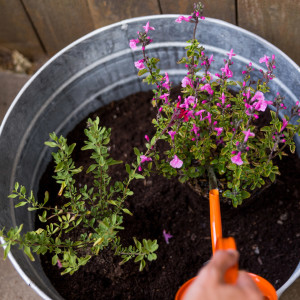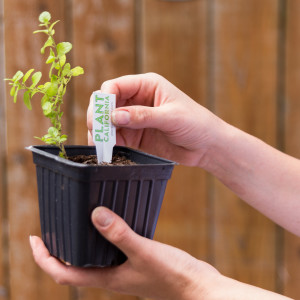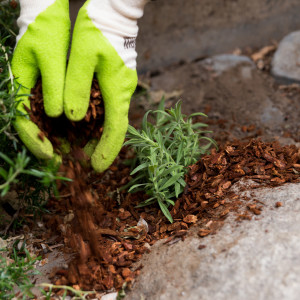Planting Guide
Fall into Planting

Asking yourself a few questions before planting will set your garden up for success. Not all plants will grow in all conditions, each plant has specific environmental needs. It’s important to understand the growing conditions in your garden to determine which plants will thrive in your environment and how to best utilize your space.
- Are you planting in the ground, in a raised bed, or in a pot?
- Does your garden get full sun, partial sun or shade during which times of day?
- Which type of soil do you have (loamy, sandy or clay)?
Once you’ve determined the growing conditions in your garden it’s time for a trip to your local nursery! Look on the plant tags for plants with growing conditions that fit with your environment. When walking around the nursery remember that everything you buy will grow so think small. The less mature plants are also less expensive, and they will catch up to their larger counterparts.
Early Fall is the ideal time to plant in most regions of California. Plant in early Fall (September – October) to help roots establish before the summer heat returns and allow winter rains to water thirsty young plants. Trees, shrubs and certain edibles and perennials do best when planted during Fall. Ask your local nursery or garden center when the best time(s) is to plant in your area!
Preparing to plant
- Study Your Space: Learn your garden’s growing climate, soil type and light conditions to determine which plants will do best in your space. Sunset climate zone maps are helpful in determining the growing climate in your region, including temperature, rainfall, wind, etc. Different areas may have micro-climates with better drainage, more sunlight or rockier soil. It can be helpful to take photos in the morning, midday and afternoon to see how much sun there is throughout the day.
- Plan your space: Now that you understand your garden’s growing conditions, plan what types of plants you’d like to put where. Grouping plants by watering needs help conserve water. It’s important to remember that plants will grow so consider structures and power line when finding a home for plants, especially trees.
- Amend the Soil: Healthy plants need healthy soil so the first step is to determine what type of soil you have. If needed, amend your soil with compost for added nutrients. Always use a fresh bag of soil for containers. Remember to mix well, you want to give the roots nutrients in every layer of soil.

- Pick your plants: Once you’ve determined the growing condition in your garden it’s time for a trip to your local nursery! Make a list of what types of plants (shrubs, trees, flowers or succulent) will thrive in your space. Plant tags will give you an idea of what you should expect: the size of the plant, sun, soil and temperature requirements. Not sure which plant will work best? Find some beautiful water-wise plant options here and ask a nursery professional what the best water-wise plant options are for your garden.
Planting
- Dig in!: Dig a hole about twice the width of the root ball and the same depth. The crown of the plant (everything above the soil line on the root ball) should remain above ground.
- Fall into Planting: Now it’s time to plant! Loosen up the root ball by slightly. Carefully place your plant’s roots in the hole and fill in the rest with soil, pressing down gently around the stem. Save the plant care instructions for future reference.
- Water well: Water thoroughly immediately after planting. This will ensure that there are no air pockets in the soil around the roots and give your plant a head start in establishing the root system. Determine the appropriate watering schedule for your plant when it is newly established and how you will be watering. Installing a drip system or soaker hose with a timer is a great way to maximize water efficiency and take one item off your to-do list. Check with your local water agency to see how often and when you can water.
 Mulch: Mulch helps deter pests and retains moisture in the soil. Place a 3- to 4- inch layer of mulch around the plant, leaving at least 3-6 inches between the base of the plant and mulch to prevent root rot.
Mulch: Mulch helps deter pests and retains moisture in the soil. Place a 3- to 4- inch layer of mulch around the plant, leaving at least 3-6 inches between the base of the plant and mulch to prevent root rot.
- A few weeks after planting feed with compost or fertilizer to provide the micronutrients for your plant to thrive. Learn the fertilizer basics here!
- Enjoy!: Grab a glass of lemonade or wine and pull up a chair in your new garden. You deserve it!
Shopping list:
- Plant(s)
- Shovel or trowel
- Mulch
- Container (optional)
- Drip irrigation and timer (optional)